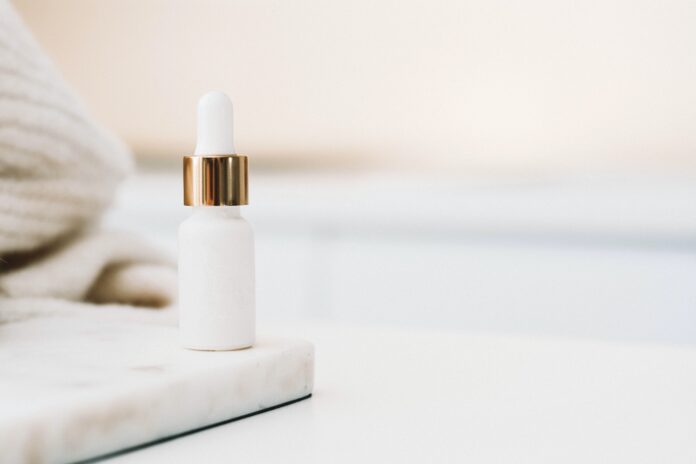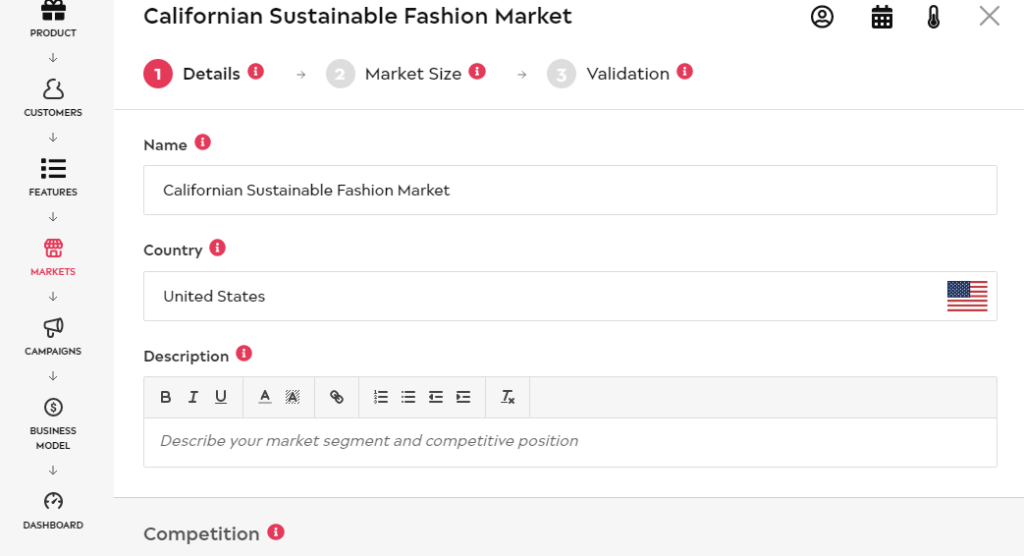Are you planning to launch your own eCommerce cosmetics business?
Have a new beauty product you want to introduce to your existing line of products available at your online store?
You have ample opportunity to succeed with either project since the global cosmetics industry is booming. It generated more than $380 billion in 2019 and will be worth almost $465 billion by 2027.

Significant drivers for this growth include an increased desire for skincare products made with natural ingredients and progressive packaging and marketing strategies.
Businesses embracing sustainability in the manufacture and packaging of products are exceptionally trendy. More than 43% of consumers will pay more for eco-friendly packaging, and almost 60% are happy to accept higher prices for natural and organic ingredients.
Yet, even if customers are happier to buy products at an increased price, an effective strategy built on a solid understanding of your target market and current trends is essential for any eCommerce business to succeed in this highly competitive industry.
Otherwise, you risk throwing time and money at a project that’s doomed to fail.
In this post, we explore the cosmetic market analysis metrics you can utilize to skyrocket your new product or startup:
- TAM
- SAM
- SOM
In fact, by mastering the metrics, you significantly reduce the business risk and realize opportunities to increase conversions.
Read on to find tips on market sizing methods and how to perform an effective market analysis online.
Cosmetic Market Analysis Metrics: Defining TAM, SAM, SOM

Think cosmetic market analysis is complicated?
It can be.
Fortunately, you have access to innovative tools that make it easier than ever, even for first-time entrepreneurs.
To analyze your target market and understand your customers use these three key metrics: TAM, SAM, and SOM.
What Is the Total Addressable Market (TAM)?
The Total Addressable Market (TAM), also known as Total Available Market, refers to the total value of your chosen Market.
For example, let’s say your cosmetic brand wants to focus on lipstick in your latest product line. You can measure the size of the lipstick market in your target area to determine the amount of money generated within a year.
The global lipstick market was worth $8.2bn in 2018, but its value is expected to exceed $12 billion in 2026. That’s a considerable amount of money beyond any company’s reach. Yet, it’s unlikely you will serve a more localized audience.
Measuring the Total Addressable Market reveals the Market’s overall revenue, the potential for your brand, and your level of competition. That can help you gain backing from investors, alongside SAM and SOM.
How to Calculate TAM (Total Addressable Market)
- Start by defining your TAM (Total Addressable Market) using average ages, genders, incomes, and locations across the overall market;
- Then, add up the online and offline lipstick sales per retailer.
Alternatively, you can:
- Begin by estimating the number of lipstick products the average person buys within a specific period (one year);
- Next, multiply that figure by the number of people within the target location;
- And multiply the result by the average price of lipstick products. That would be the TAM.
What Is the Serviceable Addressable Market (SAM)?
SAM (or Serviceable Market Segment) represents the selling potential for your specific product or service, such as only-online organic lipsticks marketed at teenage girls.
In actuality, SAM depicts the overall lipstick market segment that you’d be looking to target and gives you a more realistic goal to aim for in your eCommerce cosmetics brand.
How to Calculate SAM (Serviceable Addressable Market)
- Calculating SAM is easy. Just add up the sales of relevant products throughout the market, like online-only lipsticks for teenage girls, to find it.
What Is the Serviceable Obtainable Market (SOM)?
SOM (or Obtainable Market Share) relates to the proportion of your SAM you expect to capture with your venture. The SOM should be a smaller number than your SAM unless you’re the only eCommerce cosmetics business selling organic lipsticks for teenage girls.
Calculating your Serviceable Obtainable Market gives you a clearer idea of the market share you can expect to achieve. Your SOM reflects the market you realistically aim to capture within a year (or a different short-term period). Potential investors can use this figure to decide whether they see the potential for valuable return of investment (ROI) in your project.
How to Calculate SOM (Serviceable Obtainable Market)
- Divide the previous year’s market revenue by the SAM for the same period to discover your market share;
- And multiply your market share by your SAM for the current year. The result is the SOM.
Now, are you launching a new product? If so, you can estimate your SOM by analyzing your competitors’ performance and calculating critical factors, including ad spends, web traffic, and marketing campaigns.
De-Risk New Product Lines using TAM, SAM, and SOM
Measuring your TAM, SAM, and SOM creates opportunities to reduce the level of risk you face with your eCommerce cosmetics company and, subsequently, with your cosmetic products investment.
Calculating your Total Addressable Market, Serviceable Obtainable Market, and Serviceable Obtainable Market offers a data-based insight into the possible revenue you can generate with your cosmetic goods (e.g., a lipstick that brings something new to the market). Keep in mind that the analysis process is vital to maximizing your (marketing) return of investment (ROI).
Patrons want to know they can achieve a return on their spending to justify their initial costs and time put into supporting you. That can be particularly helpful for beginner entrepreneurs who seek advice and guidance from seasoned investors.
You can use TAM, SAM, and SOM to present a professional pitch that breaks down the overall and target markets based on hard facts. Nearly every time, great preparation is the difference between securing investments and failing to get your project off the ground.
What Methods Can You Use to Validate Your Product?

Undertaking extensive research into your target market gives you insights into what your intended customers want from their cosmetics products. Exploring trends and audiences can help you identify opportunities you may have been unaware of and open the door to new ideas.
For example, Revlon spent two years working on products aged at females over 50 years old. They discovered that this was an underserved segment and realized that they could gain a competitive edge by addressing their pain points. One common issue was that women in this age group struggled to apply eyeshadow to wrinkled eyelids.
Revlon’s research led to the creation of the Vital Radiance line, comprising more than 100 items.
Make breakthroughs by analyzing your target market via:
- Interviews and focus groups: Interact with people in your intended audience to find out what they’re looking for in specific cosmetics, how they react to your proposed product(s), and what they’d expect to pay.
- Online surveys: Send simple questionnaires to prospective consumers for your products to discover what they think of your business and services.
- Assess market reports: Grow your knowledge of your target market by researching the financial performance of your competitors across the past 2 or 3 years to understand trends and patterns and gain a competitive edge.
- Prototypes and wireframes: This is about presenting people with visual representations. That can be on paper. In fact, for a lot of people, putting things in paper form is easy and convenient. They don’t need to gaze at a computer screen. Additionally, you can create, for instance, five web pages that link to each other. That is also a comfortable and efficient way to analyze your target audience.
- Minimum viable products: Sometimes, building a minimal viable product just to test the market is a great way to offer great value to consumers, while, at the same time, you can collect sought-after data about their preferences.
Needless to say, before conducting any surveys or interviews or following any of the other validation methods, you have to decide what aspects of your product have to be validated. Sure, you might already believe that there’s an actual audience ready to purchase your product or that your pricing is aggressive and good enough to compete. But, there are other critical aspects of your product you have to consider, such as design, USP, and features, among others to ensure its success.
How to Perform Ecommerce Cosmetic Industry Market Segmentation Using EpiProdux
Follow this step-by-step guide to performing market segmentation for the cosmetic industry with EpiProdux:
- Sign in to EpiProdux and select your product from your portfolio:

- Click on the product you want to assess (e.g., Natural Makeup):

- Click on the Markets icon on the left-hand side of the screen:

- Select the relevant market to reach the market analysis section. In our example, the market is the Californian Sustainable Fashion Market:

- Move to the Market Size area and add your target audience profiles. Based on your research, you should have a clear idea of your buyer’s gender, age, relationship status, and other characteristics.

- Now, you can analyze customer segments, demand, TAM, SAM, and SOM. For TAM, enter your estimates for the total available number of customers and your estimate for how many units each customer will purchase:

Next, you need to estimate your SAM, the number of serviceable customers. Take into account your distribution channels available, the sales channels your customers use, your customer’s location.
As a rule of thumb, your SAM will be 5 to 20% of TAM. Let’s use an example of organic conscious customers:
- 10% of TAM are customers that purchase online regularly;
- They are primarily between the ages of 25 – 35;
- And they tend to be city residents.

Finally, you have to estimate your SOM. That is the segment of your SAM that you can realistically target within a short time, like one year.
To err on the side of caution, smaller companies can win around from 0.5 to 2% of customers from a market segment. This means that if your TAM is 23m, your SAM is 2.3m, you could estimate winning 2% of 2.3m, or 46,000, which is awesome.
However, you might not be satisfied with a 2% market share.
That’s fine. You don’t have to apologize for wanting to increase your revenue even more.
While it won’t be easy, it’s certainly possible to find ways to increase your SOM. Here are some tactics to consider:
- Increase the number of units each customer purchases
- Increase your average order value (AOV)
- Reduce your product prices
- Calculate the Total Available Market (Total Addressable Market) by working out the number of consumers, the volume of units sold, and total market value. Consider also that the product’s attributes determine the marketing. For instance, the TAM for cosmetics as a whole varies significantly from that for lipstick alone.

- Calculate Serviceable Market Segment (Serviceable Addressable Market) by working out the number of consumers, the volume of units sold, and market segment revenue in your target market (e.g., online-only lipstick for teenage girls):

- Calculate the Obtainable Market Share (Serviceable Obtainable Market) by working out the number of consumers, the volume of units sold, market size assessment, market share, and your annual revenue:

Performing market analysis on EpiProdux gives you the data you need to identify the opportunities available in your target market within the eCommerce cosmetics industry and reduce business risk by making data-driven decisions.
Conclusion
Scaling your cosmetics brand or selling new product lines through your existing business can be a complicated, stressful process.
But conducting thorough market analysis makes it much simpler and less risky: You will know your target audience, the potential revenue available, and other critical factors.
Incorporate EpiProdux into your preparation to streamline your market analysis and calculate market value easily.
You can access all the data you need to make intelligent choices and bring customers the products they want at approachable prices.
By understanding your market size and estimating TAM, SAM, and SOM, you can de-risk your new cosmetic product lines and ensure profitability.











